How many are the over 60s not protected by the delta variant. Report
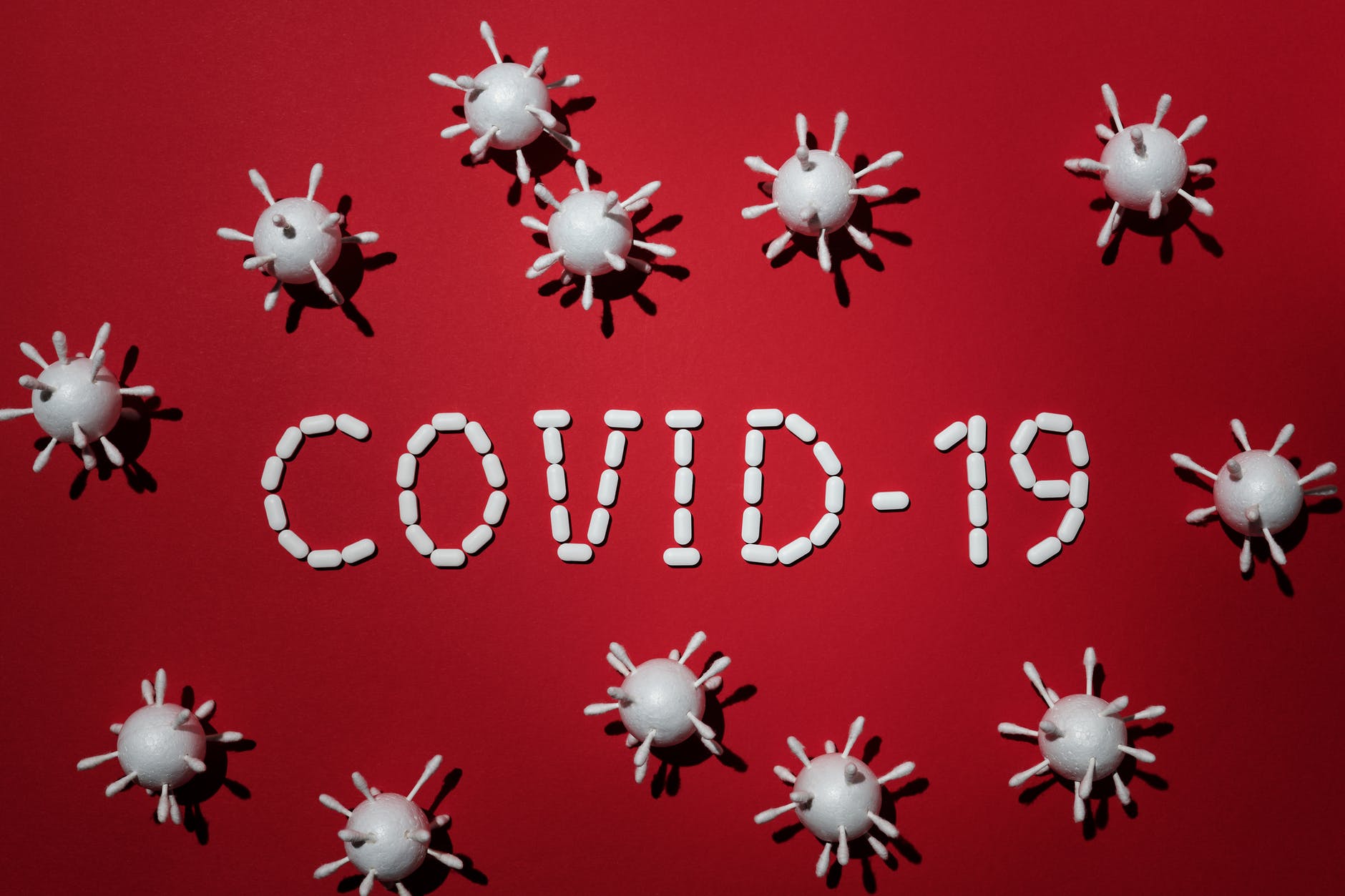
"In Italy, the Achilles heel of the vaccination campaign is represented by the more than 5.75 million over 60s at risk of serious illness without adequate coverage against the delta variant". All the details of the Gimbe Foundation's updated report on the vaccination campaign
"In Italy, the Achilles heel of the vaccination campaign is represented by the more than 5.75 million over 60s at risk of serious illness without adequate coverage against the delta variant".
The Gimbe Foundation has launched the alarm, which today publishes the Covid report on the week 30 June-6 July.
"In detail – explains the president of the Nino Cartabellotta Foundation – 2.29 million (12.8%) have not yet received even a dose of vaccine with wide regional differences (from 22.6% in Sicily to 7.7% in Puglia ) and over 3.46 million (19.4%) must complete the cycle after the first dose: 2,495,962 with AstraZeneca, 837,052 with Pfizer-BioNTech, 128,878 with Moderna.
Six months after the start, the vaccination campaign – says Cartabellotta – shows its limits: supplies lower than expected, irregular deliveries, vaccination hesitation and inadequate institutional communication ".
In the meantime, as a consequence of these gaps, the monitoring reveals an increase in new cases (+ 5%), against a decline in hospital indicators (-24.2% hospitalizations; -30.7% intensive care) and deaths ( -26.4%).
Here is the full report of the Gimbe foundation on the progress of the pandemic and the vaccination campaign in Italy:
The independent monitoring of the Gimbe Foundation detects in the week 30 June-6 July 2021, compared to the previous one, an increase in new cases (5,571 vs 5,306) (figure 1); deaths (162 vs 220) (figure 2), currently positive cases (42,579 vs 52,824), people in home isolation (41,121 vs 50,878), hospitalizations with symptoms (1,271 vs 1,676) and intensive care ( 187 vs 270) (figure 3). In detail, compared to the previous week, the following changes were recorded:
- Deaths: 162 (-26.4%)
- Intensive care: -83 (-30.7%)
- Hospitalized with symptoms: -405 (-24.2%)
- Home isolation: -9,757 (-19.2%)
- New cases: 5,571 (+ 5%)
- Currently positive cases: -10,245 (-19.4%)
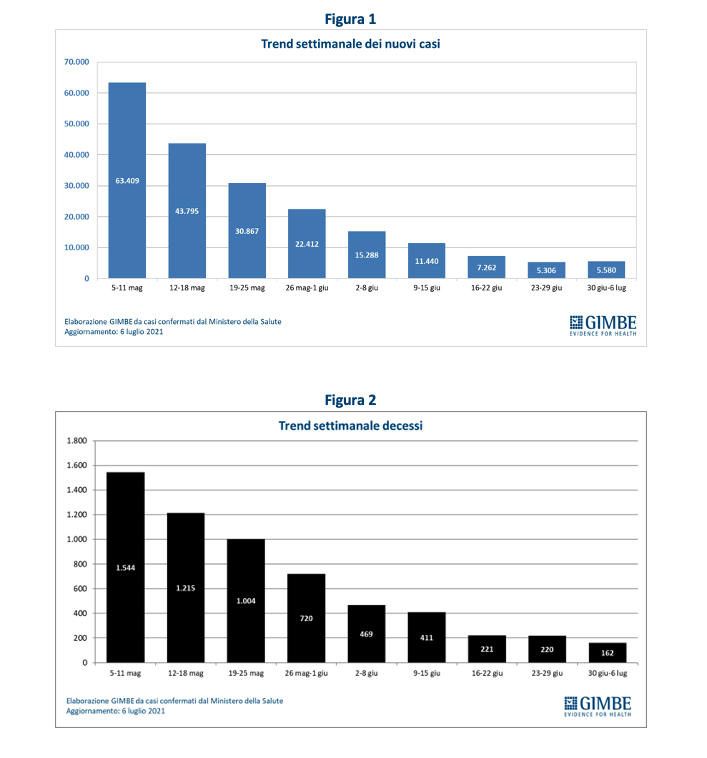
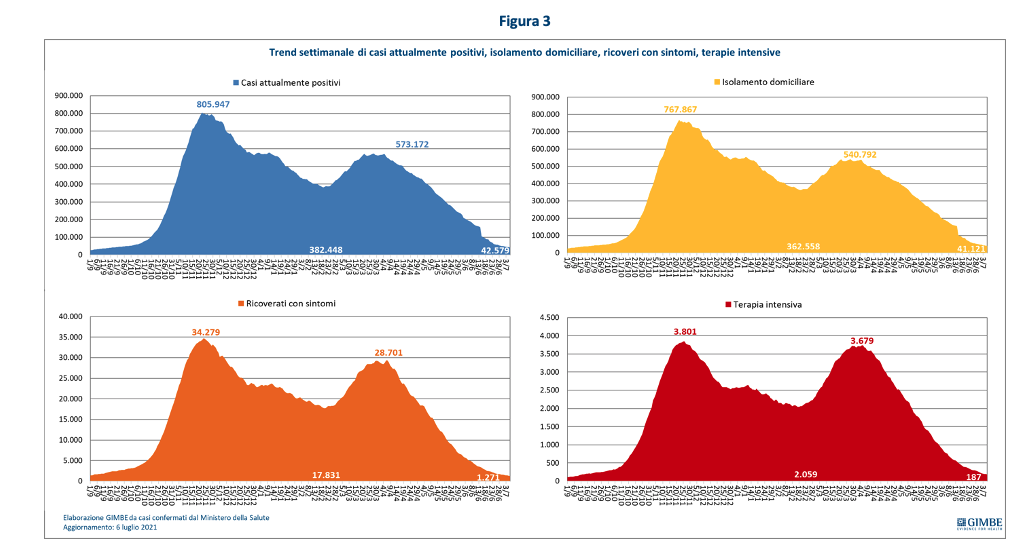
«On the front of the new weekly cases – declares Nino Cartabellotta, President of the Gimbe Foundation – after 15 consecutive weeks of descent there is an increase of 5% compared to the previous week. Even the testing activity, after 7 weeks of decline, recorded an increase of 15.5%, however continuing to settle on too low numbers, with consequent underestimation of new cases and insufficient tracing of contacts ». From the week of May 5-11, the number of people tested weekly fell progressively by 60.3%, from 662,549 to 263,213, before rising again this week to 303,969 (figure 4). In 11 Regions there is a reversal of the trend with a percentage increase in new cases compared to the previous week, while the remaining 10 Regions are confirmed in decline (table). Deaths, after the apparent stabilization of last week, probably attributable to recalculations, have started to decline again, settling at 162 in the last week with an average of 23 per day compared to 31 the previous week.
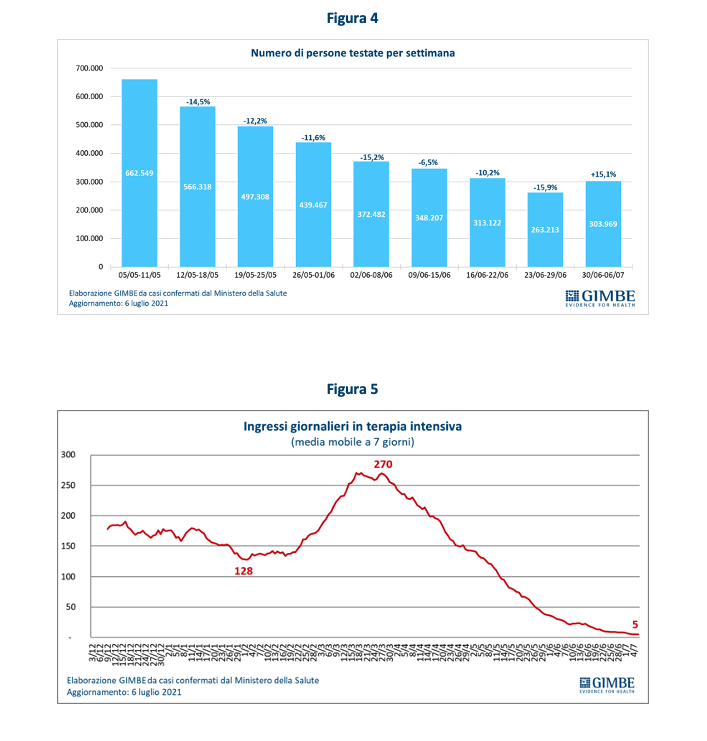
"The trend of hospitalized patients – says Renata Gili, Head of Research on Health Services of the Gimbe Foundation – continues its descent both in the medical area and in intensive care, where the occupation of beds by Covid patients stands at 2% . All Regions record values of less than 10% and there are 8 Regions that do not count Covid patients hospitalized in a critical area ». In detail, from the peak of April 6, the number of beds occupied in the medical area fell from 29,337 to 1,271 (-95.7%) and those in intensive care from 3,743 to 187 (-95%). The number of people in home isolation, from the peak of 28 March, went from 540,855 to 41,121 (-94.2%). "Daily admissions to intensive care – explains Marco Mosti, Operations Director of the Gimbe Foundation – have been decreasing for over 3 months and the 7-day moving average is 5 admissions / day" (figure 5).
Vaccines: supplies. As of July 7 (update 6.12), 60,989,653 doses have been delivered, equal to 80% of those scheduled for the first half of 2021 (figure 6). In detail:
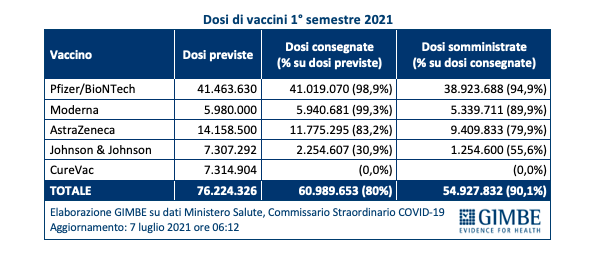
"Compared to the supplies estimated in the vaccination plan – explains the President – in the second quarter, 15,234,673 doses less than expected were delivered, both for the lack of authorization of CureVac (48% of missing doses), and for deliveries less than 'expected by AstraZeneca (-2.383.205 doses, 15.6% of the total) and Johnson & Johnson (-5.052.685 doses, 33.2% of the total) ". For the third quarter, however, we have 45,496,439 doses of mRna vaccines (48.3%) "on paper", 41,950,684 doses of adenoviral vector vaccines (44.5%), in addition to 6,640,000 doses of the CureVac vaccine which, having failed to successfully pass clinical tests, should be eliminated in the next update of the supply plan, currently stopped as of 23 April 2021 (figure 7).
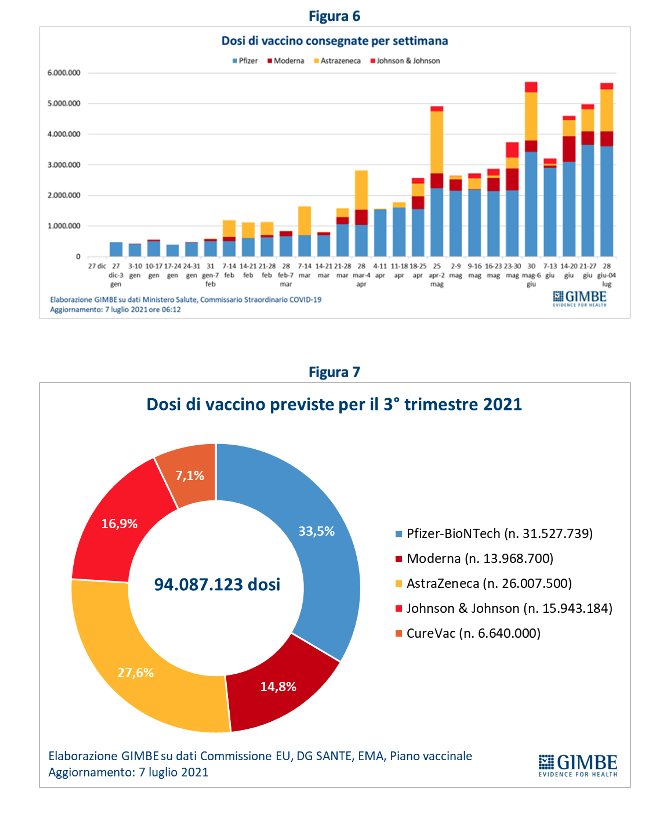
Vaccines: administrations. As of 7 July (updated at 6.12), 59.6% of the population received at least one dose of vaccine (no.35.323.440) and 36.4% completed the vaccination cycle (no.21.593.307) (figure 8). In the last week there has been a new decline in administrations that fall by 4.1% (No. 3,734,039) (figure 9), with a 7-day moving average of 524,202 inoculations / day (figure 10). A slowdown attributable to the uncertainty regarding the doses arriving, as well as the increasing distrust of the AstraZeneca and Johnson & Johnson vaccines. However, there are over 6 million doses already delivered to the Regions waiting to be inoculated: 2,095,382 from Pfizer / BioNTech, 600,970 from Moderna, 2,365,462 from AstraZeneca, 1,000,007 from Johnson & Johnson. "It should also be noted that the percentage of first doses on the total doses administered – explains Mosti – is in reduction from 3 consecutive weeks with a value that from 74% of the week 7-13 June fell to 38% of the week 28 June-4 July, with a decrease of 49% in 3 weeks "(figure 11).
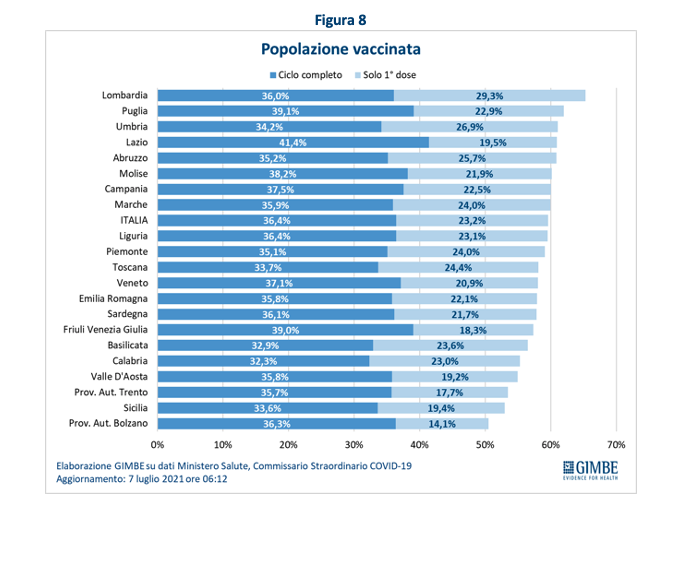
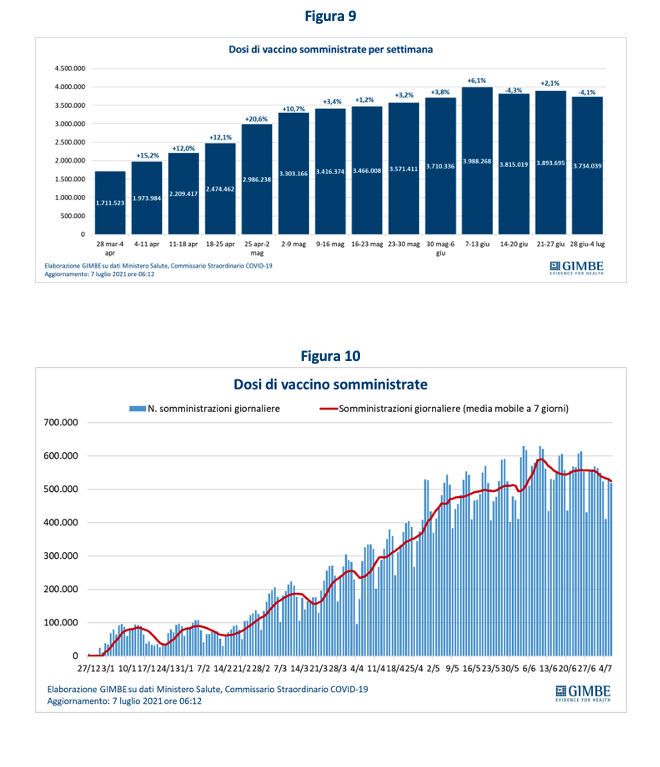
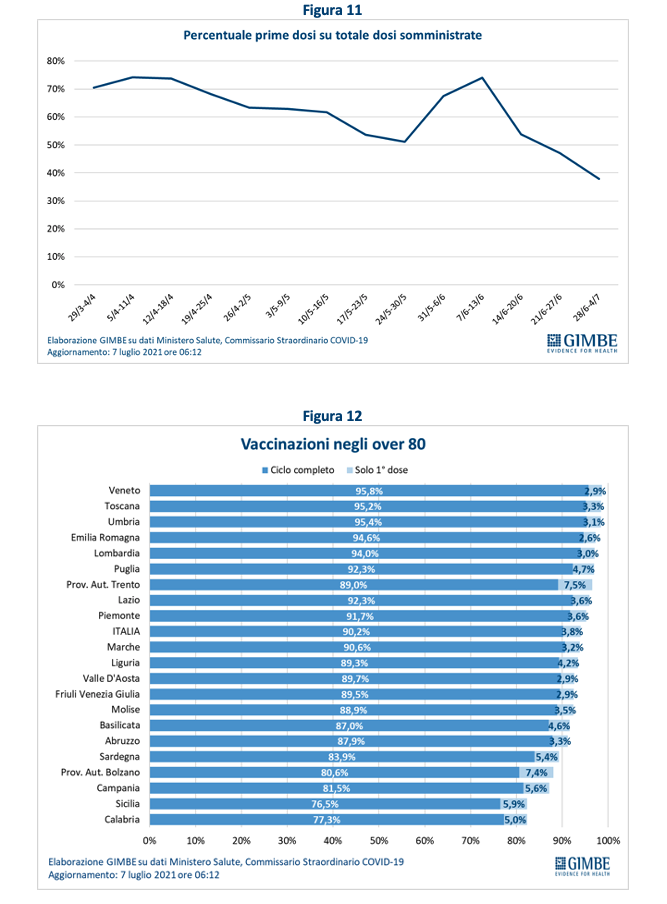
Vaccines: coverage of the over 60s. 87.2% received at least one dose of the vaccine, with some regional differences: while Puglia, Umbria and Lazio have exceeded 90%, Sicily is still at 77.4%. In detail:
- Over 80: of the over 4.4 million, 4,042,314 (90.2%) completed the vaccination course and 171,852 (3.8%) received only the first dose (Figure 12).
- Age range 70-79: of the over 5.9 million, 4,006,932 (67.2%) completed the vaccination course and 1,246,957 (20.9%) received only the first dose (Figure 13).
- Age range 60-69: of the over 7.3 million, 4,084,858 (54.9%) completed the vaccination course and 2,043,083 (27.5%) received the first dose only (Figure 14).
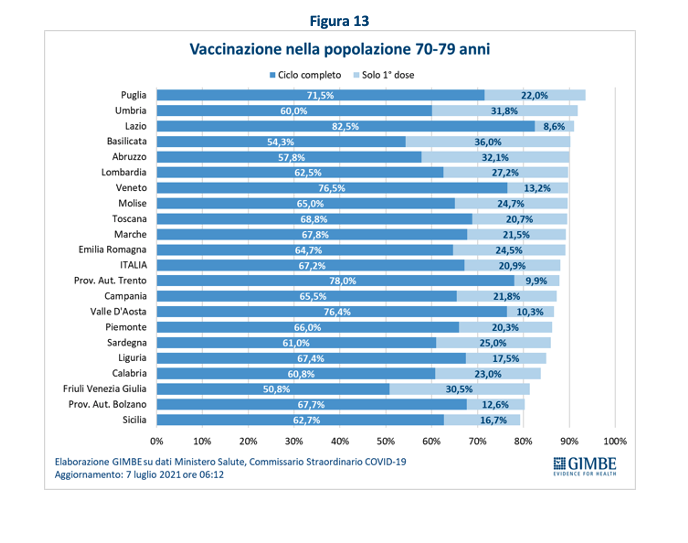
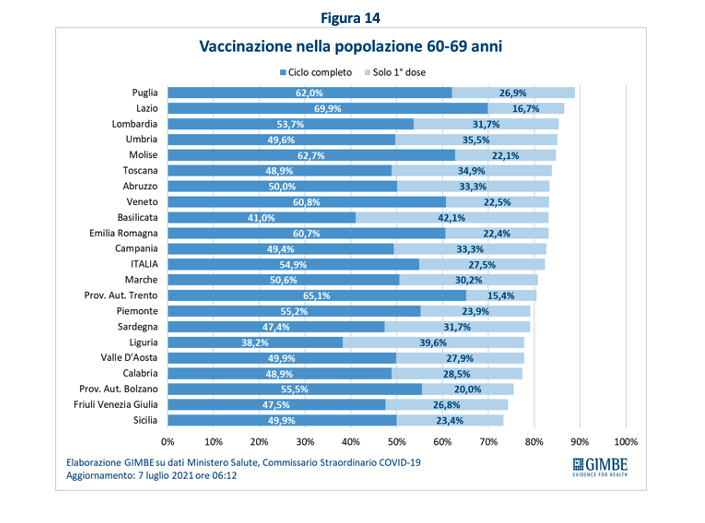
Delta variant. The latest flash survey by the Istituto Superiore di Sanità estimates the prevalence of the delta variant at 22.7% with significant regional differences (range 0-70.6%). «The data from England and those, albeit preliminary, from Israel – Gili points out – confirm the high efficacy of the complete vaccination cycle in preventing severe forms of Covid-19, hospitalizations and deaths. However, in our country the Achilles heel of the vaccination campaign is currently represented by the more than 5.75 million over 60s at risk of serious illness without adequate coverage against the delta variant "(figure 15). In detail, 2.29 million (12.8%) have not yet received even a dose of vaccine with significant regional differences (from 22.6% in Sicily to 7.7% in Puglia) (figure 16) and over 3, 46 million (19.4%) must complete the cycle after the first dose: 2,495,962 with AstraZeneca, 837,052 with Pfizer-BioNTech, 128,878 with Moderna. Moreover, the trend of administration of the first doses by age group now confirms the flattening of the curves of the over 80s and the 70-79 and 60-69 age groups and has recorded a decline for over 4 weeks for the 50-59 years and since about 2 weeks for the 40-49 range (figure 17), albeit with considerable differences in the coverage percentages between the various age groups (figure 18).
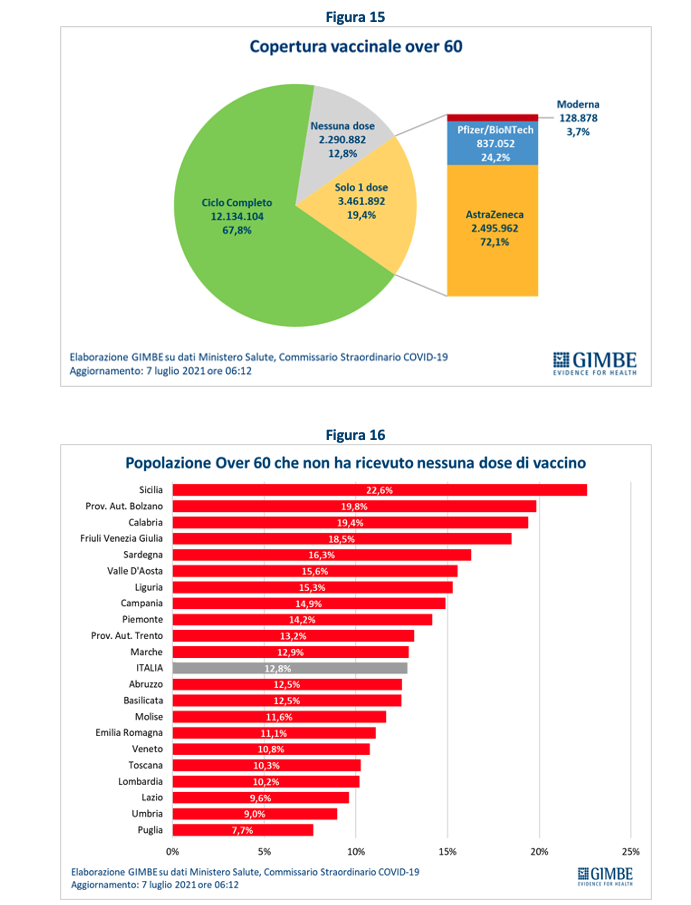
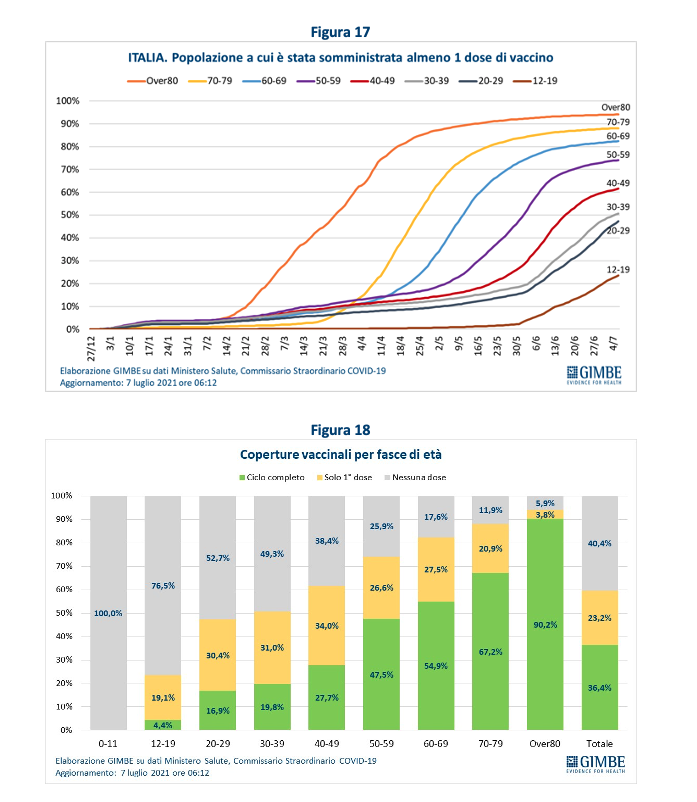
Vaccination campaign criticality. A little more than 6 months after the start of the vaccination campaign, the Gimbe Foundation detects the following critical issues:
- Availability of doses
- The number of doses delivered is significantly lower than expected: -14.266.090 (-50.5%) in the 1st quarter and -15.234.673 (-20%) in the 2nd quarter.
- Deliveries from manufacturing companies, with the exception of Pfizer / BioNTech, have been intermittent in timing and quantity, making regional planning more difficult.
- Despite a substantial residual availability (over 3.36 million doses as of 7 July 2021), the adenoviral vector vaccines are not able to be adequately used both for changes in the indications for use by age groups and for the growing mistrust of population, making the campaign increasingly dependent on mRNA vaccines.
- Slowdown in the administration of the first doses
- The acceleration of the vaccination campaign starting from April determines at this time the need to administer a high number of boosters, reducing in the short term the possibility of carrying out first doses in the under 50s, also given the uncertainty about the supplies of the next months which leads to setting aside large quantities for the administration of second doses.
- In the over 50s, especially in the 50-59 and 60-69 range, vaccination hesitation is evident, in particular for adenoviral vector vaccines, the result of fake news and institutional communication unable to transmit the risk-benefit profile of vaccination which may vary in relation to the epidemiological context. Furthermore, despite the claims, a true active calling strategy never took off nationwide.
«The increase in cases resulting from the spread of the delta variant – concludes Cartabellotta – destined to continue in the coming weeks must not generate alarmism. Of course, the data is worrying about its potential impact on hospitals which will be inversely proportional to the complete vaccination coverage of the over 60s. This is why, in addition to enhancing contact tracing and sequencing, it is necessary to implement active call strategies for the over 60s and not are still booked, both speed up the administration of second doses. Finally, we are all called to actively contribute to slowing down the spread of the delta variant by maintaining responsible behavior and avoiding the mistakes of last summer ».
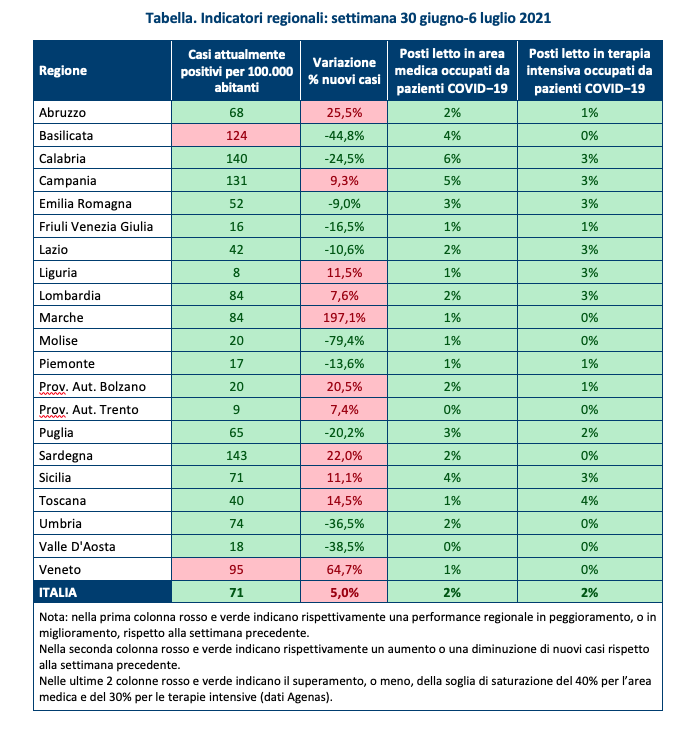
This is a machine translation from Italian language of a post published on Start Magazine at the URL https://www.startmag.it/sanita/quanti-sono-gli-over-60-non-protetti-da-variante-delta-report/ on Thu, 08 Jul 2021 08:41:29 +0000.
